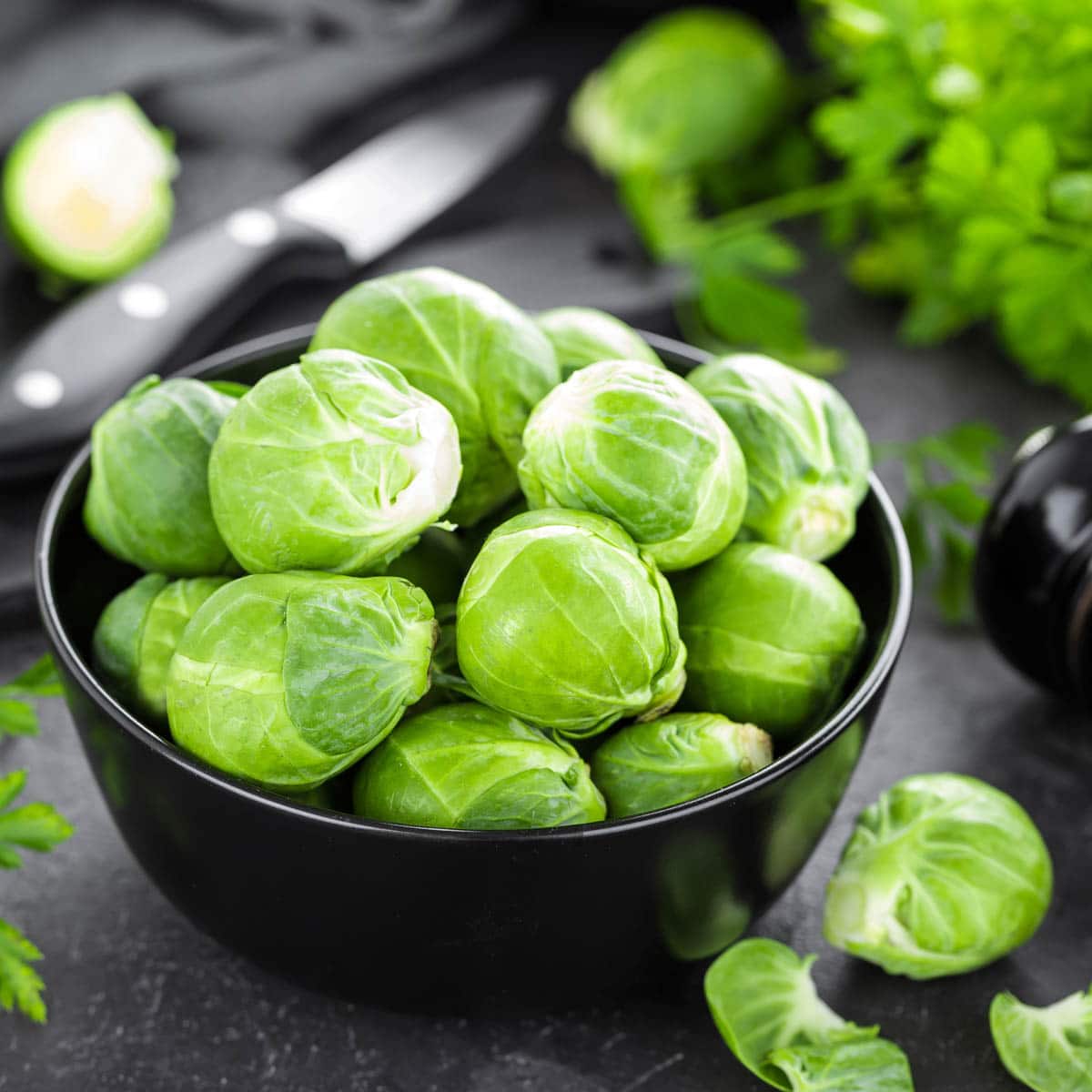How To Tell If Brussel Sprouts Are Bad?
Brussel sprouts are a delicious, earthy vegetable that tastes great in salads, roasted, or sauteed. But, if they’ve been in your fridge for a few days, how can you tell if Brussel sprouts are bad?
There are many ways to tell and preserve them so they are fresh even longer.

How to tell if Brussel sprouts are bad?
Brussel sprouts are grown on a long vine above ground and have many layers like leeks, so you may see dirt, or the outer leaves may have dark spots or look shriveled.
This is ok, just peel away the first layer of leaves, and if the rest of the sprout looks fresh, it’s still good.
They are bad if you see…
There are a couple of physical signs you can look for to tell if they are no longer good to eat.
Basically, use your judgment to decide if you want to eat them. Our senses are excellent at keeping us safe from eating foods that aren’t good for us.
There’s no harm in throwing them out if you suspect they’ll get you sick.
Look:
Take a look at the leaves to see if there are insects in them or mold or black spots all the way through the leaves. If so, go ahead and toss that one out.
You can also cut through the sprout to check out the middle to make sure it’s not just the outer leaves that are not good.
It’s normal to see spots on the first layer of the sprouts, just peel them off, and you should be good to go.
Smell:
If they have a strong, pungent smell, they are no longer good to eat. Your nose is sensitive and can usually detect rotten food from smell alone very well.
They should have a subtle, earthy smell instead.
Touch:
If the Brussel sprouts feel squishy or soft in your hand, the leaves in the middle have rotted and are mushy.
They should feel firm to the touch all the way through.
Taste:
If the outside of the sprouts looks alright, but after cooking them, they taste extremely bitter, or like dirt, they are most likely not good to eat.
This is usually avoided by using your other senses to tell if they’re bad before cooking them.
Also, check out how to tell if butternut squash is bad or how to tell if cauliflower is bad.
How to prep Brussel sprouts
Brussel sprouts are easy to prep to use in your dishes.
- Peel the outer leaves and check for signs that they are no longer good to eat.
- Slice them in half with a chef’s knife.
- Saute them in a hot pan or roast them in the oven for the best flavors!
How to store Brussel sprouts
Keep your Brussel sprouts fresh for the longest amount of time with these steps.
The best way to do this is to keep them in the refrigerator or the freezer until you’re ready to eat them. Cover them loosely if you store them in the fridge to have room to breathe.
You can also place them on the counter if you plan to eat them in a couple of days.
Tip: It’s good to wash your fruits and vegetables, but you don’t want to wash brussel sprouts until you’re ready to use them.
If you haven’t tried air frying your brussel sprouts then you are missing out! Check out this air fryer brussel sprouts recipe!
How to freeze Brussel sprouts
There are a couple of steps to freezing Brussel sprouts that make them taste fresher when they are thawed and cooked later.
Prep: Peel off the outer layers.
Blanch: Cook them in boiling water for one to two minutes.
Drain: Drain the water from the sprouts in the sink and run cold water over them for a minute to stop the cooking process.
Dry: Dry the sprouts off with a towel or allow them to air dry.
Freeze: Spread the sprouts out on a large tray and put the tray in the freezer uncovered for 30 minutes.
Repackage: Take them out of the freezer, put them into a large zip-top bag, and put them back in the freezer.
Store: You can keep them in the freezer for up to three months.
How long do Brussel sprouts last in the fridge?
Storing Brussel sprouts in the fridge is a great way to make them last longer without actually freezing them. Keeping them in the fridge doesn’t change their texture as freezing does.
Sprouts last 7-10 days when they’re stored in the refrigerator.
Keep them on the counter for four days or in the freezer for three months.
You can also learn more about how to tell if kohlrabi is bad which is in the same family as brussel sprouts.
FAQs
Conclusion
Brussel sprouts can be cooked as a side dish or made into a meal and they’re amazing when cooked with bacon or root vegetables.
So, how can you tell if Brussel sprouts are bad? The best ways include using your senses to look, smell, touch, and taste. If they are no longer good to eat, throw them out and buy new ones.
You can keep them stored on the counter, in the fridge, or in the freezer, depending on how long it will be until you’re ready to eat them.

Online Cooking for Beginners Course